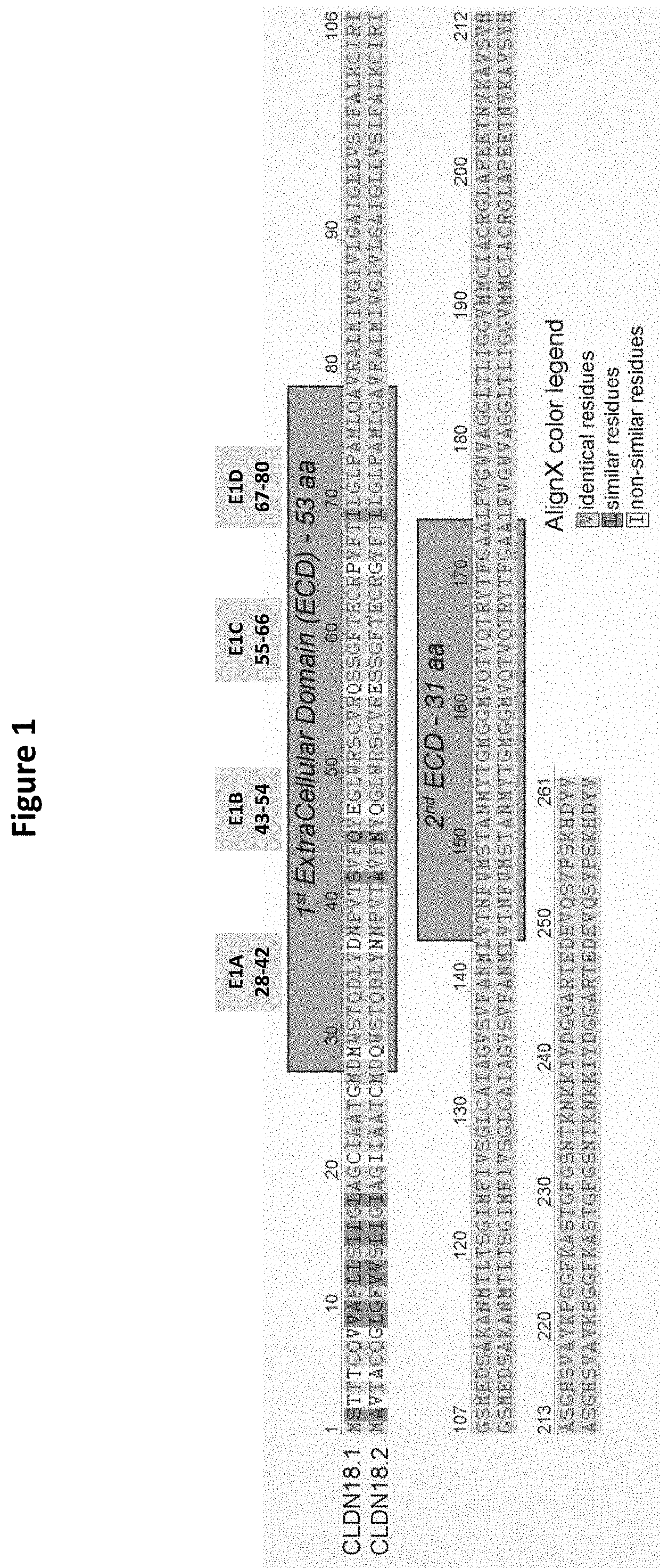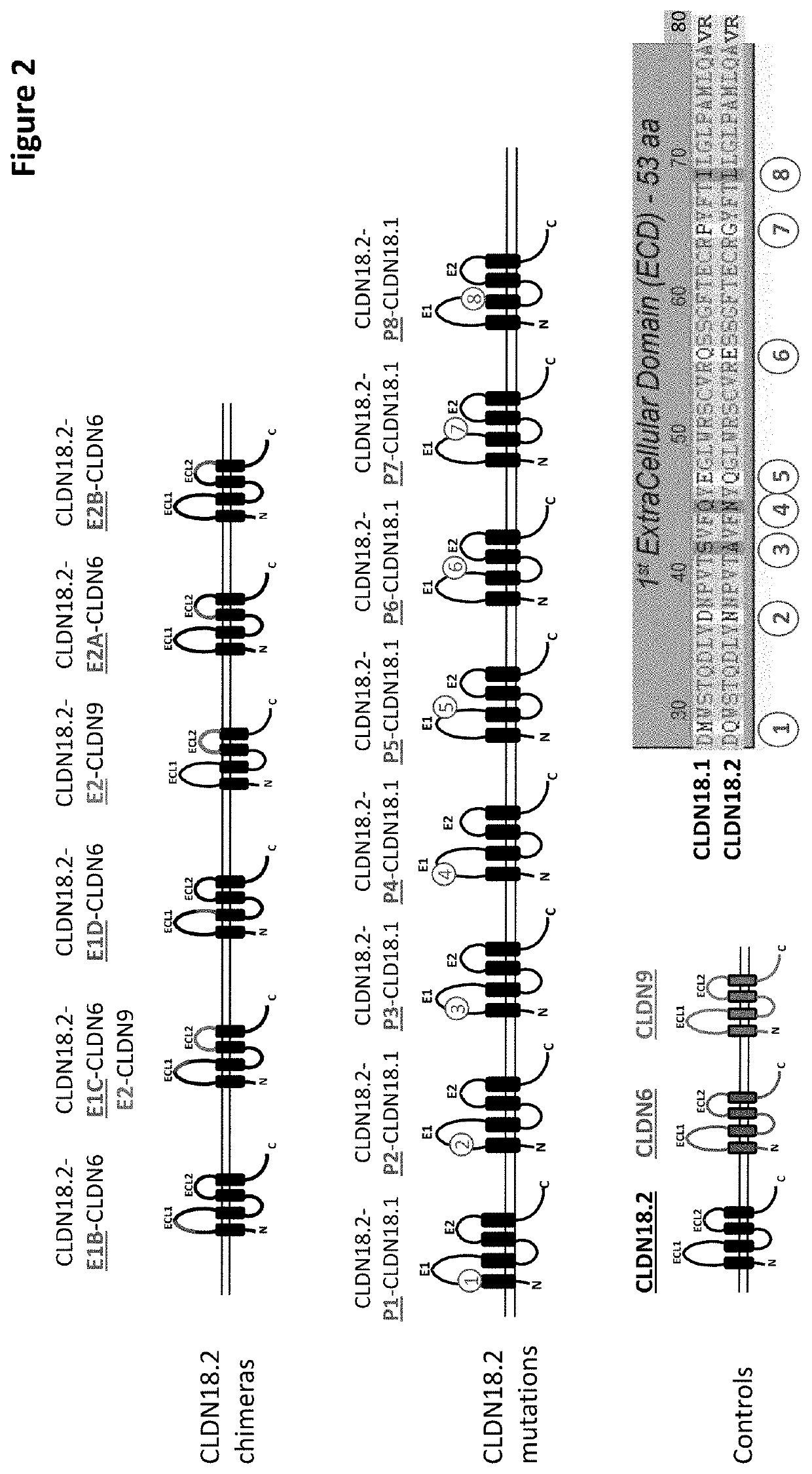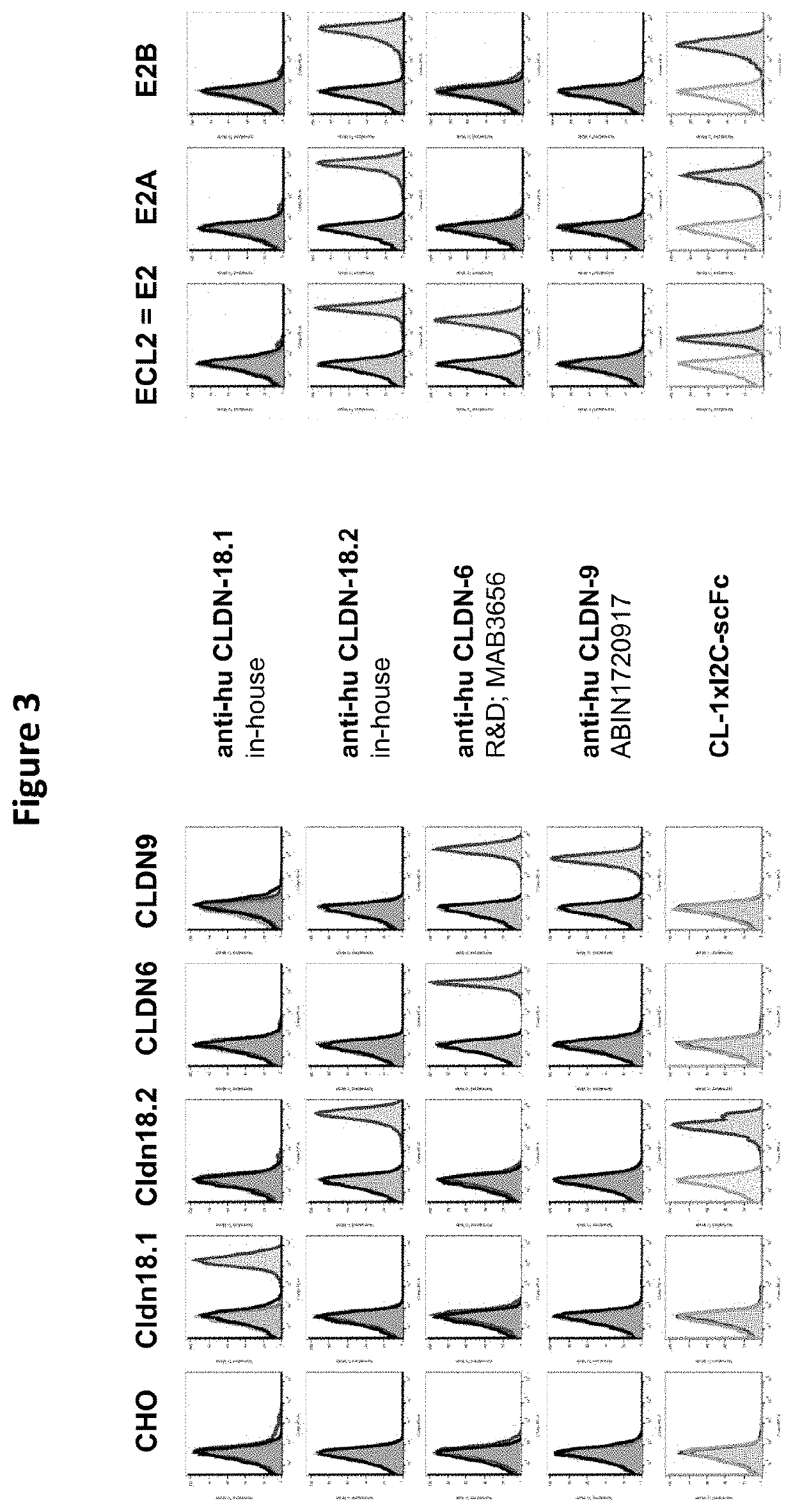Antibody Constructs for CLDN18.2 and CD3
a technology of cldn18 and constructs, applied in the field of antibody constructs for cldn18.2 and cd3, can solve the problems of limited efficacy of targeted therapy and immunotherapy agents in advanced pancreatic cancer, and limited success of several targeted therapy and immunotherapy agents
- Summary
- Abstract
- Description
- Claims
- Application Information
AI Technical Summary
Benefits of technology
Problems solved by technology
Method used
Image
Examples
example 1
Generation of CHO Cells Expressing CLDN18.2 Mutations
[0543]For the purposes of epitope mapping, E1 (extracellular loop 1; ECL1, SEQ ID NO: 2) of CLDN18.2 was divided into four sub-domains (E1A, E1B, E1C and E1D), and E2 (extracellular loop 2; ECL2, SEQ ID NO: 3) was divided into two sub-domains (E2A and E2B). The amino acid sequence of the respective epitope region (loop / domain or sub-domain) of human CLDN18.2 (E1, E1A, E1B, E1C, E1D, E2, E2A and E2B) was exchanged for a counterpart sequence of human CLDN6, with two exceptions (see FIGS. 1 and 2): E2 was exchanged for a sequence originating from human CLDN9; and in the construct having a mutated E1C (exchange of CLDN18.2 E1C for the counterpart CLDN6 region), E2 of CLDN18.2 was also exchanged for a sequence originating from human CLDN9. The latter served as a means to detect expression of the CLDN18.2 / CLDN6-chimera. The expression of all chimeric constructs in CHO cells was verified via FACS analysis (see below). As there was no pro...
example 2
Epitope Mapping of Anti-CLDN18.2 Antibody Constructs
[0564]CHO cells transfected with the constructs described in Example 1 were stained with purified CLDN18.2×CD3 antibody constructs at a concentration of 20 μg / ml. Bound antibody constructs were detected with an anti-human IgG Fc-gamma-PE (Jackson ImmunoResearch; 1:100). All antibodies were diluted in PBS / 2% FCS. As negative control, cells were incubated with PBS / 2% FCS followed by the anti-human IgG Fc-gamma-PE. The samples were measured by flow cytometry.
[0565]The results of the epitope mapping analysis are shown in FIGS. 3 and 4. When a loss of the FACS signal is observed for cells expressing a certain CLDN18.2 chimera or mutation, the respective CLDN18.2×CD3 antibody construct is assumed to bind to the epitope (loop / domain / sub-domain) or to the specific amino acid that was exchanged in this CLDN18.2 chimeric or mutated molecule. In other words, this epitope region or amino acid is required for the binding of the CLDN18.2×CD3 ant...
example 3
Biacore-Based Determination of Affinity to Human and Cynomolgus CD3 and FcRn
[0573]Biacore analysis experiments were performed using recombinant human / macaque CD3-ECD (ECD=extracellular domain) fusion proteins with chicken albumin to determine target binding of the antibody constructs of the invention.
[0574]In detail, CM5 Sensor Chips (GE Healthcare) were immobilized with approximately 600-800 RU of the respective recombinant antigen using acetate buffer pH 4.5 according to the manufacturer's manual. The CLDN18.2×CD3 antibody construct was loaded in a dilution series of the following concentrations: 50 nM, 25 nM, 12.5 nM, 6.25 nM and 3.13 nM diluted in HBS-EP running buffer (GE Healthcare). Flow rate was 30 μl / min for 3 min, then HBS-EP running buffer was applied for 8 min to 20 min again at a flow rate of 30 μl / ml. Regeneration of the chip was performed using 10 mM glycine 10 mM NaCl pH 1.5 solution. Data sets were analyzed using BiaEval Software. In general, two independent experim...
PUM
 Login to View More
Login to View More Abstract
Description
Claims
Application Information
 Login to View More
Login to View More - R&D
- Intellectual Property
- Life Sciences
- Materials
- Tech Scout
- Unparalleled Data Quality
- Higher Quality Content
- 60% Fewer Hallucinations
Browse by: Latest US Patents, China's latest patents, Technical Efficacy Thesaurus, Application Domain, Technology Topic, Popular Technical Reports.
© 2025 PatSnap. All rights reserved.Legal|Privacy policy|Modern Slavery Act Transparency Statement|Sitemap|About US| Contact US: help@patsnap.com



